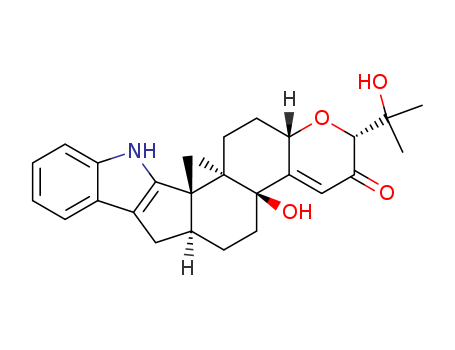Base Information
Edit
- Chemical Name:Paxilline
- CAS No.:57186-25-1
- Molecular Formula:C27H33NO4
- Molecular Weight:435.563
- Hs Code.:29419090
- European Community (EC) Number:637-206-0
- UNII:3T9U9Z96L7
- DSSTox Substance ID:DTXSID10972643
- Nikkaji Number:J31.896E
- Wikipedia:Paxilline
- Wikidata:Q10860377
- Metabolomics Workbench ID:68078
- ChEMBL ID:CHEMBL410063
- Mol file:57186-25-1.mol
Synonyms:paxilline




 T
T
